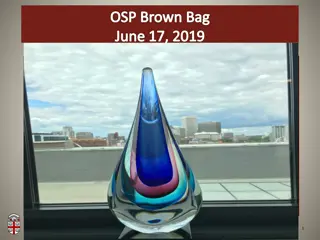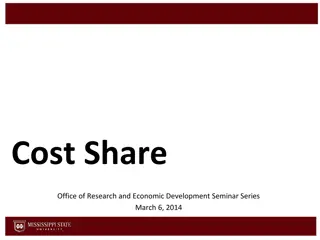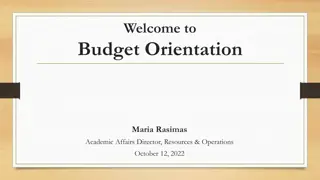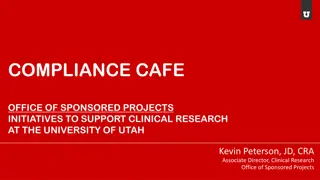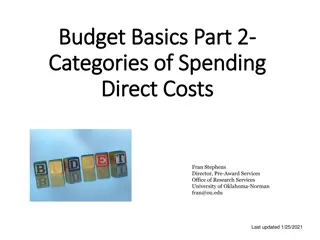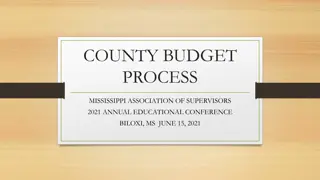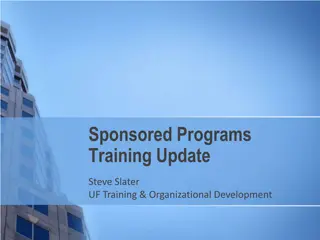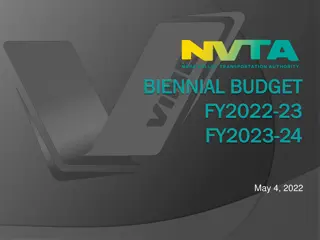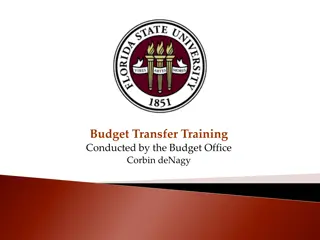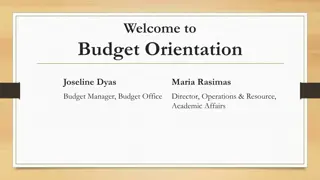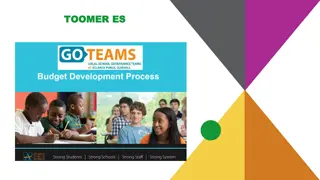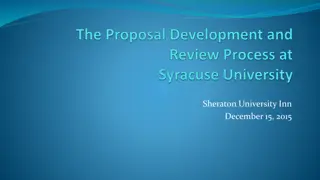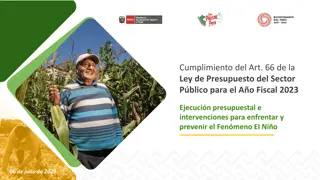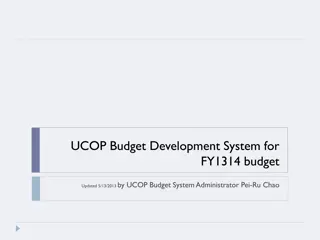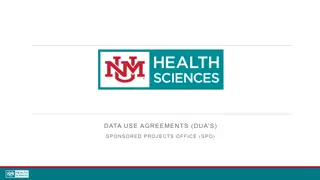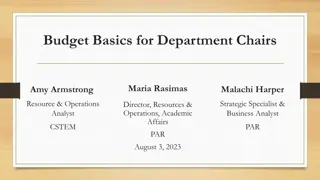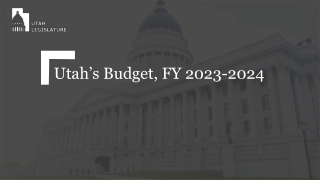Comprehensive Guide to Budget Development for Sponsored Projects
This informative guide covers key aspects of budget development for sponsored projects, including direct vs. indirect costs, cost share, effort, budget justifications, and more. Learn about the main parts of a budget, types of direct costs, personnel costs, fringe benefits, equipment, travel, supplies, subrecipients, and consultants. Gain insights into handling detailed project considerations and engaging third-party organizations effectively. Useful tips and resources are provided to enhance your budget development process for successful project management.
Download Presentation

Please find below an Image/Link to download the presentation.
The content on the website is provided AS IS for your information and personal use only. It may not be sold, licensed, or shared on other websites without obtaining consent from the author. Download presentation by click this link. If you encounter any issues during the download, it is possible that the publisher has removed the file from their server.
E N D
Presentation Transcript
Budget Development for Sponsored Projects Catherine Cuppett, July 2017
Budget Development What we will cover today: What is allowed on a sponsored project budget Direct vs Indirect Costs Extra considerations Cost Share Effort Budget Justifications
What are the main parts and how do I start? RFP or RFA Scope of Work Budget Budget Justification
Budget Development Direct Costs Allocable Allowable Reasonable Types Salary & Fringe Materials and Supplies Travel Equipment
Direct Costs Personnel Costs Identifiable Working on project Within project period 100% is 100% Rates are set by HR Raises UGA employees
Direct Costs Fringe Benefits Estimated at time of proposal, but actual rates are charged to the grant. Equipment Items with a useful life of more then 3 years and a cost of $5,000 or more Travel Per diem, airfare, mileage and conference registrations for employees working on sponsored projects in furtherance of the project Supplies Refers to lab/research or programmatic supplies needed to complete a specific scope of work.
Direct Costs Try to think through your project in details. E.g., if you are using animals ask yourself things like: Do you need a per diem for their care? Where will they be housed? Are there cage costs? Do you need a rack? Will you need special veterinary services to do your project?
Direct Costs Subrecipient or Subcontractor A third-party organization performing a portion of work on a prime UGA or UGARF award. In contrast to a vendor, a subrecipient performs part of the scope of work of the project. Consultant Third part providing highly technical or professional advice. Does not control the manner in which the work is performed. Does not engage in programmatic decision making. Sub vs. Procurement contact your SPA Rep for a helpful check sheet Subrecipient Commitment Form
Indirect Costs Indirect Costs (IDC) also called Facilities and Administrative Costs (F&A) Costs that are necessary to support sponsored projects, but are not easy to identify, quantify, and link directly to the scope of work of a project. Pre-Award can help you figure out which rate to use. All rates can be seen in the Frequently Used Information section of the SPA website
Where does IDC go? Each fall, UGA returns 20% of each sponsored project s reimbursed F&A costs, based on expenditures made in the previous fiscal year. F&A returns are typically made to the budgetary unit managing the award, but can be to other units, depending on the info provided by the PI/Co-PI in the Grants Portal. http://www.policies.uga.edu/FA/nodes/view/809
Other Considerations: Effort Effort the amount of time PI(s), faculty, and other senior personnel spend on a particular activity. Most proposals must show the percentage of effort committed to the project. The percentage of effort should be commensurate with the percentage of salary requested. More than 100% awarded effort is not allowed http://policies.uga.edu/FA/nodes/view/860/Committed- Effort
Other Considerations: Effort Salary savings Each college/center has an incentive plan for ensuring faculty charge effort to projects Funds can be used to cover a variety of costs
Other Considerations: Cost Share Cost Share refers to that portion of the total project costs not borne by the sponsor. Cash Match - Cash contributions made to a project by UGA, UGARF, or a third party. In-Kind Match - The reasonable value of personnel effort, equipment, materials or other property used in the performance of a statement of work. Third-Party Match - Any expenditure necessary to complete a project that is borne, not by the sponsoring agency or the prime award recipient, but by a third party.
Other Considerations: Cost Share Mandatory The cost share must be included in the proposal budget in order to be considered for funding by the sponsor, as outlined in the RFP. It is a requirement as a condition of the award. Voluntary - The cost share is not required by the sponsor but is offered by the applicant in the proposal. Once cost share is offered, it becomes a binding commitment and must be honored, if the project is funded.
Other Considerations: Cost Share How is cost share tracked? A companion account is set up that is yoked to the restricted account. Anything cost shared (in-kind or cash) has to be moved to the companion account. Cost share obligations must be met. Ideally we like to: Avoid volunteering cost share Use sponsor funds to pay for your effort
Budget Justification A narrative clarification of each of the budget components Explains how dollar amounts were determined Indicates how each item relates to the research plan All items must be justified don t assume their use is obvious to reviewers Explains who, what, when, where, and why Explain if meals, visa fees, international travel, and/or incentive payments are critical to the project Listing items is not sufficient for a justification, especially for a CASB exception. A detailed explanation must be included for all requested funds.
Example #2 Due to the remote off-campus and out-of-state research sites, various laboratory, safety, office supplies, and shipping materials/postage related to packaging, processing, and transporting seeds and samples will need to be purchased.



